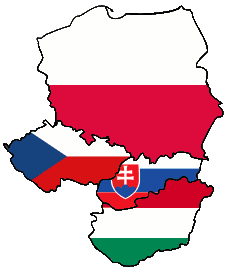
Rejoin the West: Central Europe’s Path to EU and NATO Membership
The fall of the Iron Curtain in 1989 marked a turning point for Central Europe, a region that had been isolated behind the Soviet-dominated Eastern Bloc for decades. The countries of Central Europe—Hungary, Poland, Czechoslovakia (later the Czech Republic and Slovakia), and others—began a transformative journey to „return to Europe” by reintegrating with Western political, economic, and security structures. This collective aspiration to rejoin the Western world, symbolized by joining the European Union (EU) and NATO, fostered a spirit of cooperation and unity among these nations.
A key step in this process was the formation of the modern Visegrád Group (V4) in 1991. The group was founded in the historical town of Visegrád, Hungary, where, centuries earlier, in 1335, the kings of Hungary, Poland, and Bohemia met to forge a political and economic alliance. This 14th-century meeting aimed to strengthen the three Central European kingdoms’ economic and political ties and reduce their dependence on external powers, particularly the Holy Roman Empire. The modern V4—comprising Hungary, Poland, the Czech Republic, and Slovakia—was built on this legacy of cooperation, uniting these nations in their effort to reintegrate with Europe after decades of Soviet control.
Led by visionary leaders like József Antall of Hungary and Václav Havel of Czechoslovakia, the Visegrád Group worked towards securing EU and NATO membership, recognizing the importance of a collective approach to overcoming the challenges of political and economic transition. In this period, Bratislava played a central role as the headquarters of the International Visegrád Fund (IVF), which was established to promote regional cooperation through cultural, scientific, and educational initiatives. Additionally, economic cooperation was fostered through the Central European Free Trade Agreement (CEFTA), an important precursor to the countries’ eventual inclusion in the EU’s single market.
Security concerns were a significant motivator for the countries of Central Europe as they sought to „return to Europe.” NATO membership became a primary goal, as it represented not only military protection but also alignment with the democratic values and institutions of the West. Hungary, Poland, and the Czech Republic were among the first former Warsaw Pact nations to join NATO in 1999, marking a key moment in the region’s post-communist history.
Important symbols of this new security relationship can be seen in places like Székesfehérvár, Hungary, home to the Multinational Division Centre, and the Taszár Air Base, which became NATO’s first military base on former Warsaw Pact territory. These developments underscored the geopolitical shift in Central Europe, as countries once dominated by the Soviet Union were now integrated into the Western defense structure. The „Days of NATO” event in Ostrava, Czechia, is another example of how these nations continue to celebrate their security alliances and the protection afforded by NATO membership.
While NATO provided security guarantees, full integration with Europe also meant joining the European Union, which offered political, economic, and social integration on an unprecedented scale. The Timewheel in Heroes’ Square, Budapest, became a symbolic marker of this journey, commemorating Hungary’s accession to the EU in 2004. The Timewheel, one of the largest sand timers in the world, represented the passage of time and Hungary’s long road from oppression to freedom and prosperity within the European family.
Poland’s accession to the EU was a similarly momentous event, following a referendum in 2003 where an overwhelming majority of Poles voted in favor of joining the Union. This decision was not only a step toward economic growth and stability but also a reaffirmation of Poland’s place in the European community. The signing of agreements in Warsaw to join NATO and later the EU were milestones in Poland’s modern history, reflecting its strategic role in both regional security and European politics. The establishment of the Weimar Triangle between Poland, France, and Germany further underscored Poland’s importance in shaping European relations.
For the Czech Republic, the 2004 EU accession also marked a significant transformation. The events at Rozvadov, symbolizing the country’s entry into the Schengen Area, and the celebrations in places like Plzeň, where the literary and philosophical reflections of Milan Kundera were invoked to capture the lightness of freedom within the EU, further highlighted Czechia’s renewed place in Europe. Madeleine Albright, the Czech-born U.S. Secretary of State, played an instrumental role in facilitating this transition, advocating for NATO expansion and the inclusion of Central Europe in Western institutions.
One of the most tangible benefits of joining the EU has been the inclusion of Visegrád countries in the Schengen Area, allowing for the free movement of people across borders. The reopening of the Maria Valeria Bridge between Esztergom, Hungary, and Štúrovo, Slovakia, after decades of being closed, symbolizes the new era of openness and cooperation. The bridge, destroyed during World War II and left in ruins throughout the Cold War, was rebuilt after both nations joined the EU, marking a literal and metaphorical reconnection of Central Europe with the rest of the continent.
The path to European integration for the nations of Central Europe was not easy, but the spirit of cooperation and the shared desire to „return to Europe” helped drive the region’s transformation. The Visegrád Group and its associated institutions, like the International Visegrád Fund and CEFTA, along with symbolic events and places like Heroes’ Square in Budapest, the Maria Valeria Bridge, and Székesfehérvár, all represent the region’s commitment to democracy, security, and prosperity. Today, the countries of Central Europe are firmly embedded in the European and transatlantic systems, working together to build a stable and united future in the heart of Europe.

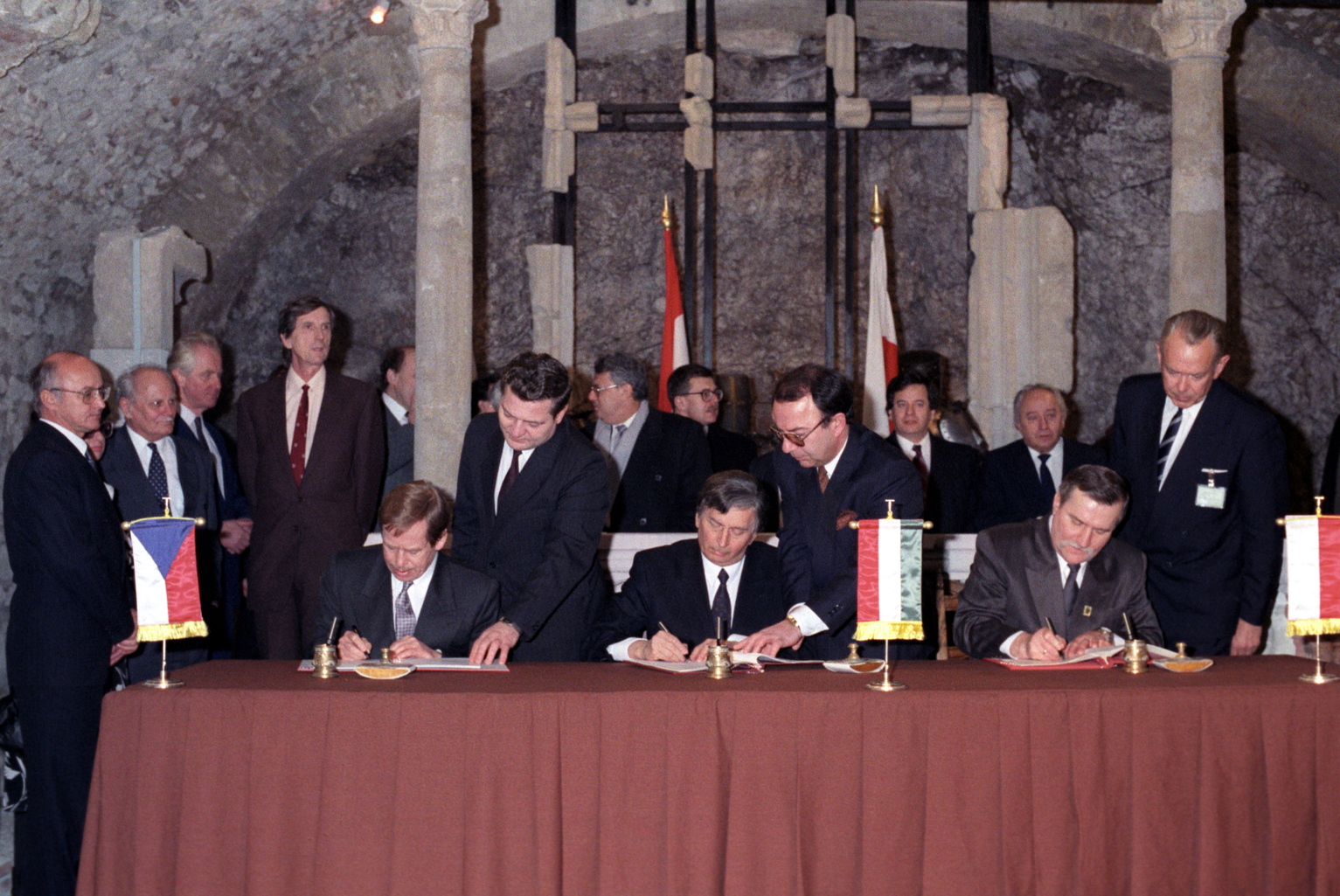
Begining of the V4 (1335 and 1991) – Visegrád
Visegrád, a small yet historically significant town in Hungary, is the symbolic birthplace of one of Central Europe’s most enduring and important alliances—the Visegrád Group, or V4. The roots of this alliance stretch back to the medieval period, specifically to 1335, when Visegrád hosted a momentous summit that brought together the kings of Hungary, Poland, and Bohemia. This medieval gathering laid the foundation for cooperation among the Central European kingdoms, aiming to strengthen their economic and political ties and to assert their independence in a region often caught between the ambitions of larger powers.
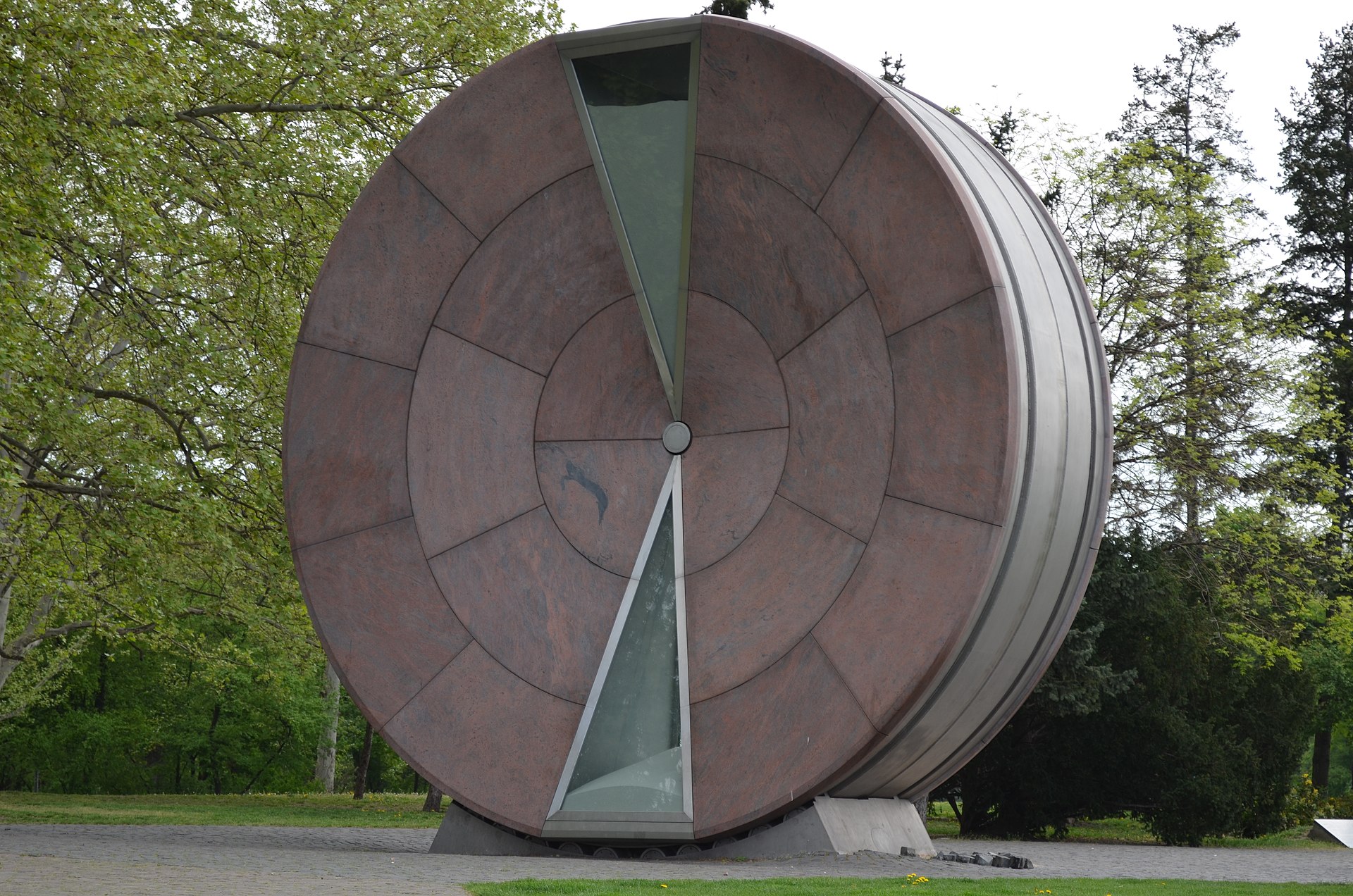
Joining the Alliances – Timewheel in Heroes Square, Budapest
The Timewheel in Budapest’s Heroes Square is one of the world’s largest hourglasses, built to commemorate Hungary’s accession to the European Union on April 30, 2004. The structure, 8 meters in diameter and 2 meters wide, is made of red granite, stainless steel, and bulletproof glass, weighing 60 tons. Inside, fine glass granules slowly trickled through, though the flow was so slow it could only be seen up close. The Timewheel was a symbolic representation of the passage of time and Hungary’s journey toward integration into European alliances such as the EU, NATO, and the Schengen Area.
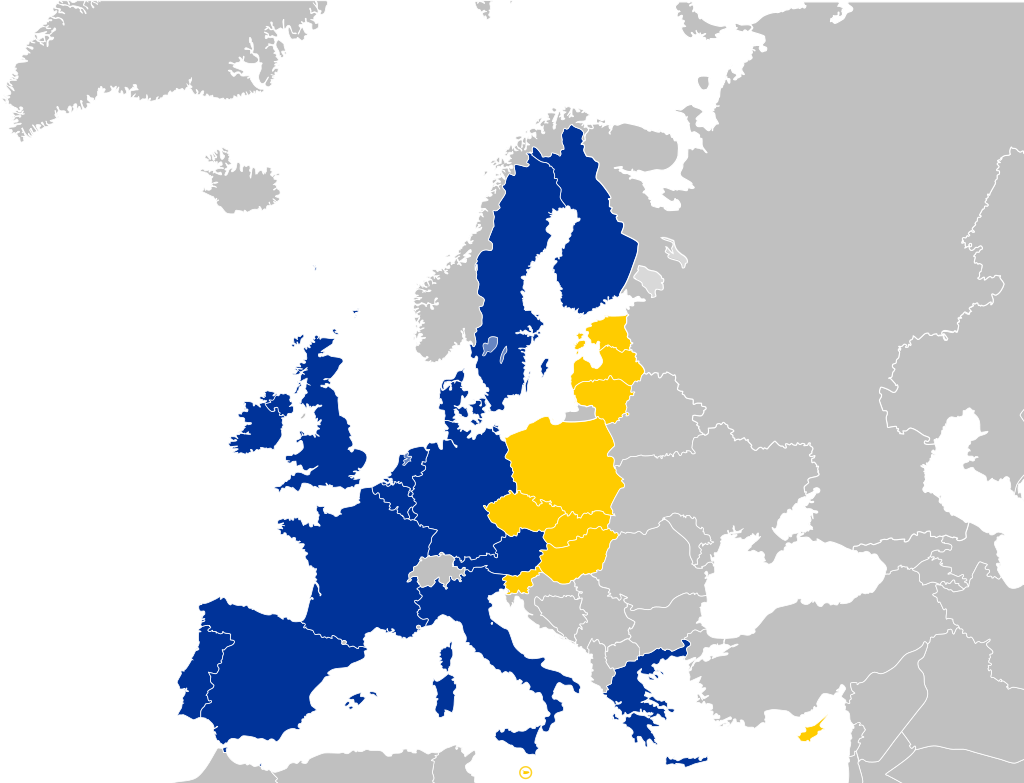
Joining the EU figure in Poland – Warsaw
Poland joined the European Union on 1 May 2004, after years of efforts and negotiations. This was a historic event that symbolised Poland’s return to the European community after decades of isolation behind the Iron Curtain. EU membership brought economic benefits to Poland, such as structural funds and infrastructure development, and strengthened its position internationally. Joining the EU was a milestone in Poland’s integration with the West.
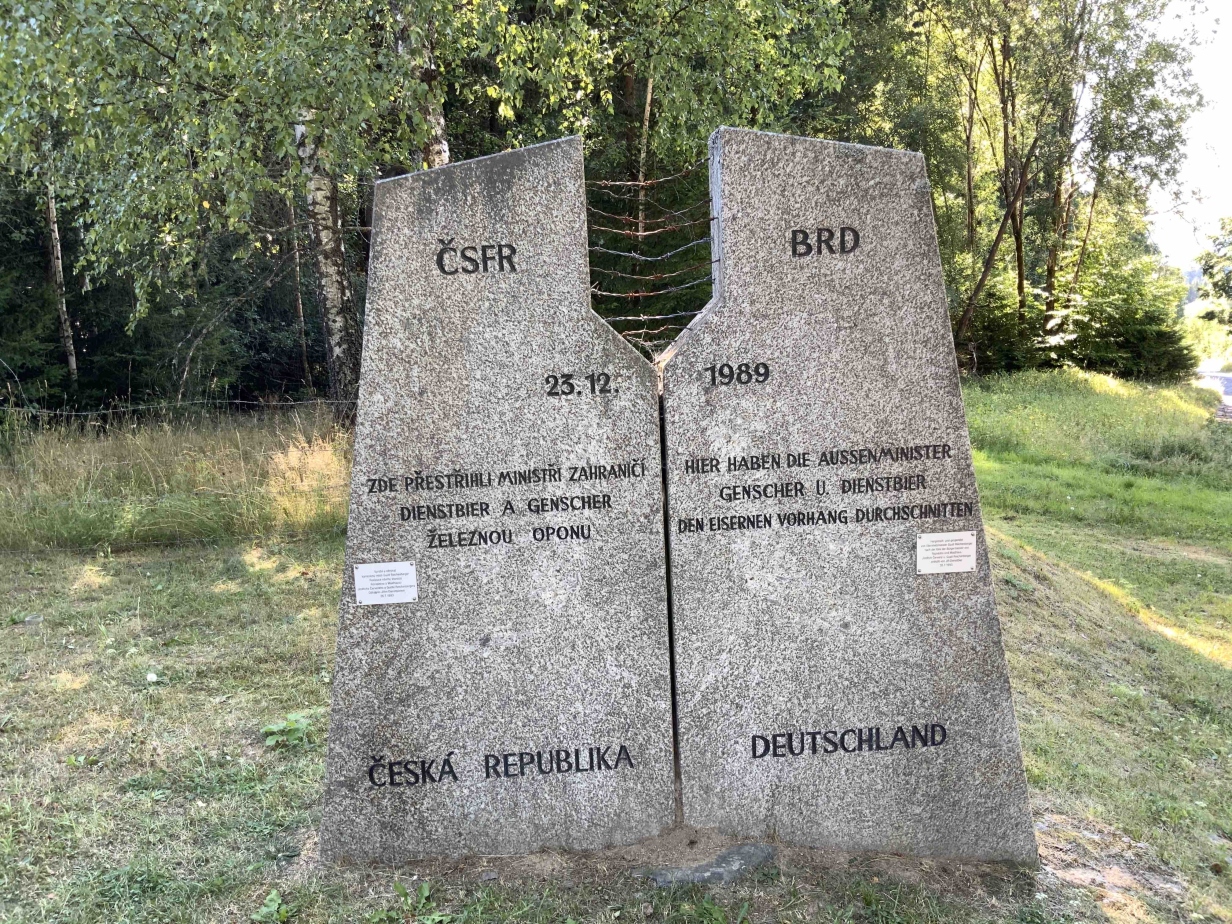
The memorial of cutting the barbed wires of the Iron Curtain – Rozvadov
Jiří Dienstbier, the first non-communist foreign minister after the fall of the Iron Curtain, wrote an essay on the Czechoslovak position in Europe when he was still a stoker and a dissident. Back then, in 1985, Czechs could only dream about Europe, and so the book was called Dreaming of Europe. During the Cold War, the position of the Czechs and Slovaks was seemingly unquestionable – they belonged to the Eastern Bloc and the Soviet sphere of influence. Since the autumn of 1989, however, everything has changed, the Berlin Wall – a symbol of the division of the world – has been torn down, and the desire for freedom and „return” of Czechoslovakia back to the states of democratic Europe has taken over the Czech and Slovak society.

